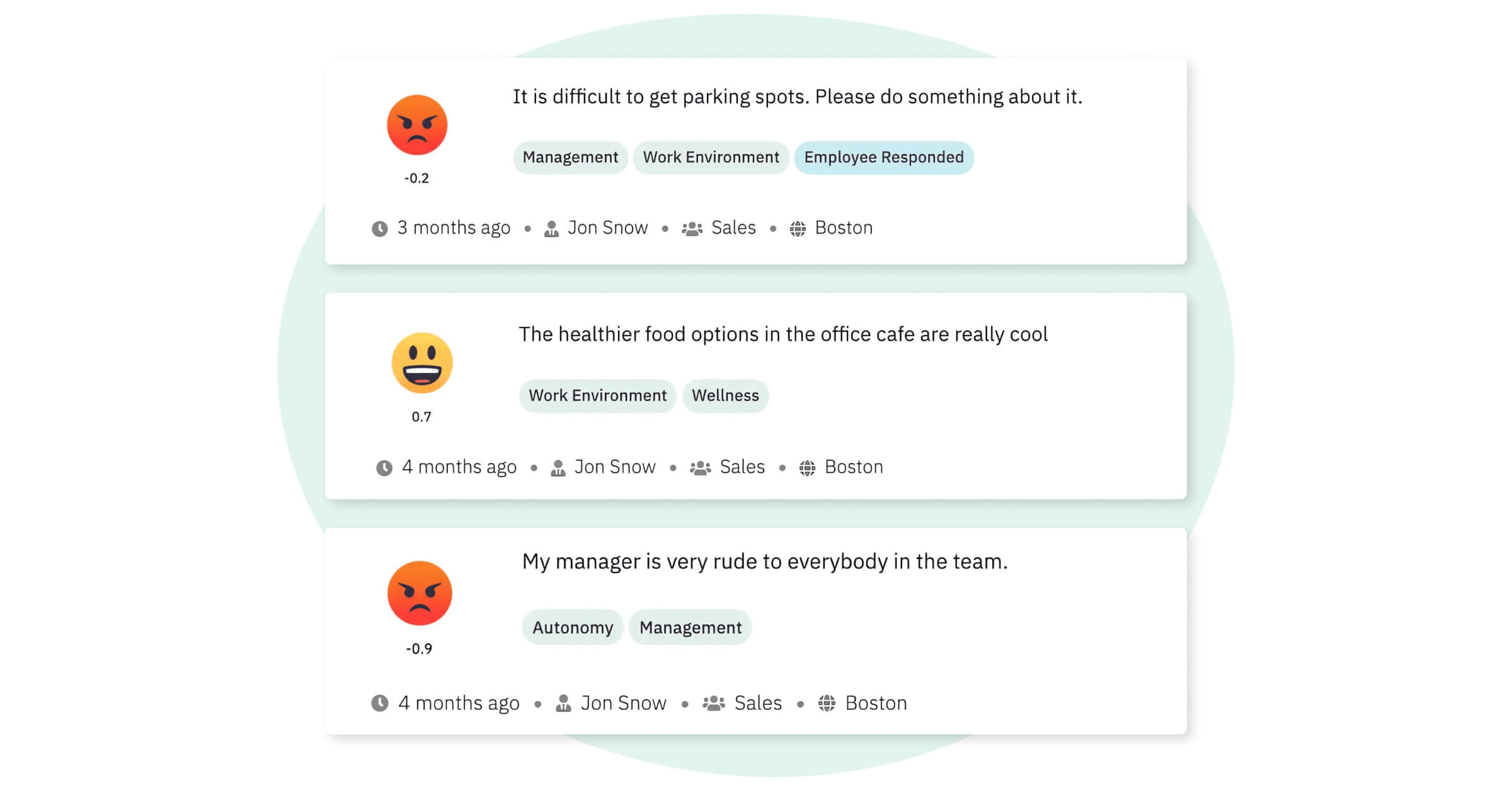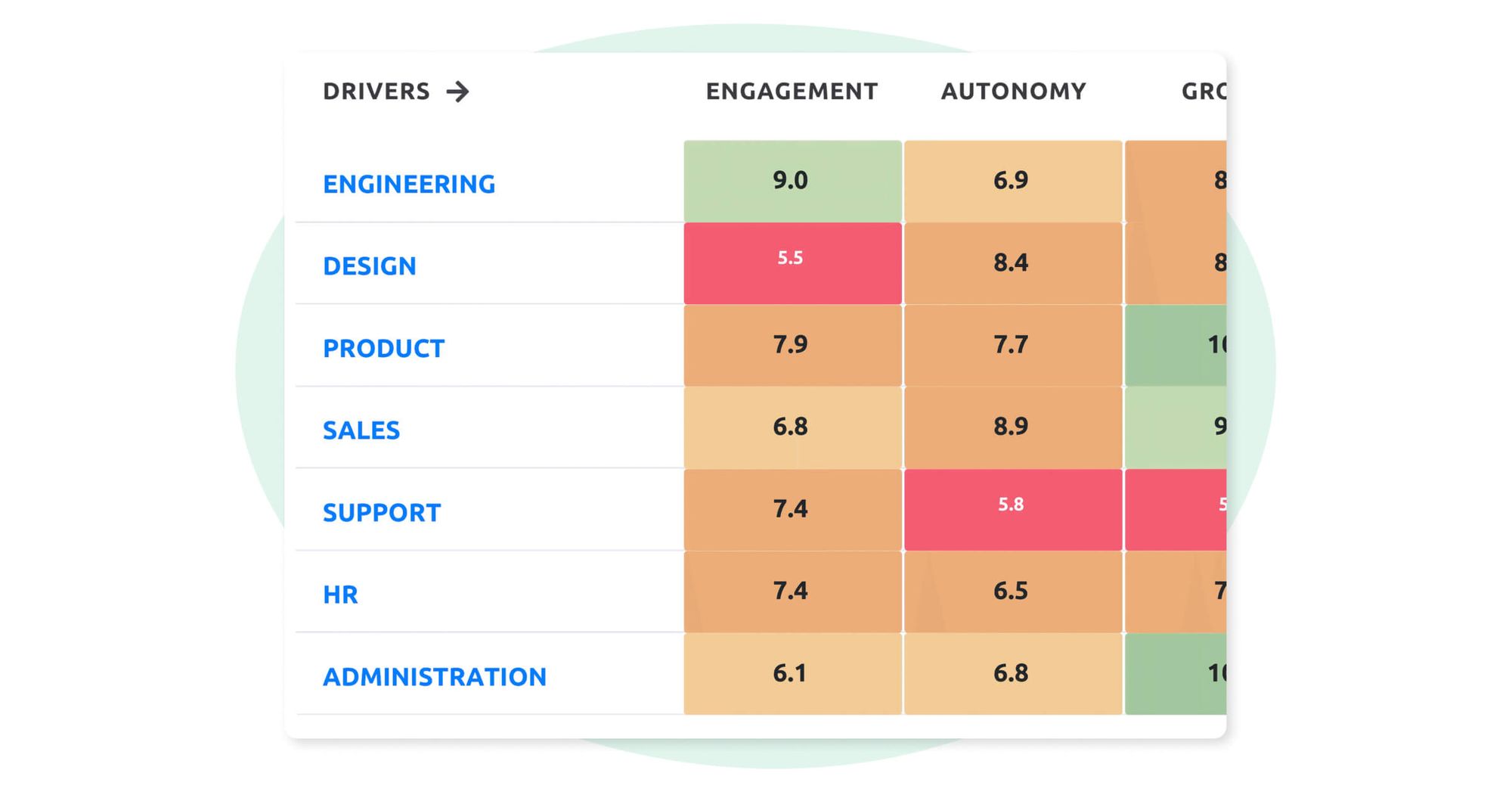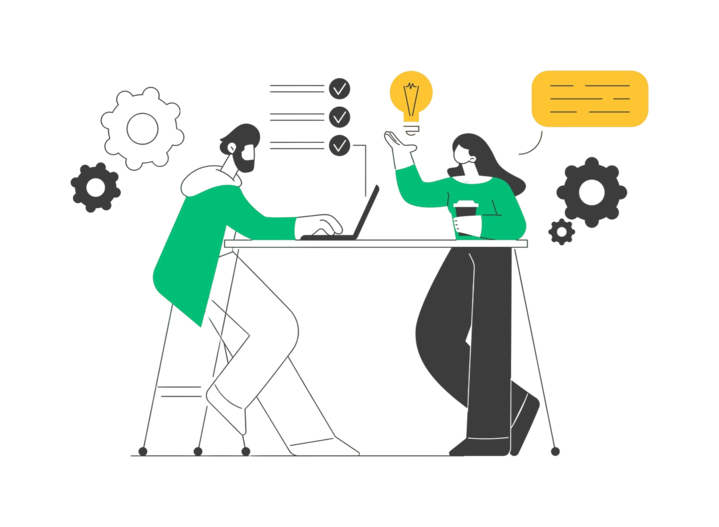120+ Employee wellness ideas to inspire a healthier workplace

Ever noticed how a neglected houseplant starts to droop, no matter how fancy the pot is? You water it, but too much at once, and it wilts. You ignore it, and it fades quietly.
Real care means steady attention with sunlight, patience, and the right rhythm. Employee wellness works the same way. It’s not about grand gestures or wellness weeks plastered with hashtags; it’s about consistent, thoughtful habits that keep people thriving day after day.
The truth? Wellness isn’t a perk—it’s your organization’s daily pulse check. When your people feel supported, they don’t just show up. They grow, adapt, and keep the culture alive. Ready to spark some inspiration? Here are 120+ employee wellness program ideas to help you create a happier, healthier, and more energized workforce.
- Employee wellness programs support physical, mental, and emotional health, building a culture where wellbeing becomes part of everyday work life.
- Thoughtful wellness initiatives improve engagement, reduce burnout, and boost productivity while strengthening company culture.
- A mix of creative, low-cost, and group wellness activities ensures inclusivity and consistent participation across teams.
- Using feedback-driven tools like CultureMonkey helps track what’s working, identify gaps, and refine wellness strategies.
- When wellness is embedded into company culture—not treated as a perk—it drives happier teams, stronger performance, and lasting business impact.
What is an employee wellness program?
An employee wellness program is a structured initiative designed by employers to support the physical, mental, and emotional health of their workforce. It goes beyond traditional benefits and focuses on creating a work culture where well-being is part of daily life.
These programs can include fitness sessions, stress management workshops, mindfulness breaks, and even simple wellness activities like hydration challenges or walking meetings. Supporting overall well-being, including physical, mental, and emotional health, is central to these initiatives, ensuring employees thrive in all aspects of their lives.
At its core, an employee wellness program aims to help people feel better — both in and outside of work. The importance of employee well-being cannot be overstated, as these programs are designed to support well-being in all aspects of life, from mental and physical health to emotional support and social connections.
When employees have access to thoughtful wellness ideas, they’re more likely to stay engaged, take fewer sick days, and perform at their best. It’s a win-win for both the company and its people.
Okay, so we know what wellness programs are, now let’s talk payoff.
Benefits of employee wellness programs

Employee wellness programs do more than promote healthy habits; they help people feel valued, supported, and connected. When wellness becomes part of everyday work life, it transforms the way employees show up and perform.
Here’s how a strong wellness initiative benefits both people and business:
- Better physical health: Wellness activities like fitness sessions, yoga breaks, and step challenges encourage employees to move more and sit less. Over time, this can reduce health risks, boost energy levels, and improve overall productivity. When physical wellness becomes routine, employees experience fewer health issues, feel more energized throughout the workday, and enjoy better health, which leads to lower healthcare costs and improved employee health.
- Improved mental well-being: Mental wellness activities for employees, such as mindfulness sessions, stress-relief breaks, or counseling access, create a supportive environment where people can recharge emotionally and stay focused. This proactive approach helps prevent burnout and encourages open conversations about mental health at work.
- Higher employee engagement: When companies invest in workplace wellness programs, employees feel appreciated. This sense of care directly increases morale, motivation, and day-to-day engagement. These programs help boost employee morale and productivity. Engaged employees are more likely to contribute creative ideas and actively participate in company wellness programs.
- Reduced absenteeism and burnout: Out-of-the-box wellness ideas like flexible hours or digital detox days help prevent exhaustion and encourage balance, leading to fewer sick days and higher retention. These programs remind employees that wellness at work is not just encouraged but expected as part of a healthy routine, which positively impacts employee retention.
- Stronger workplace culture: Integrating staff wellness ideas and team-based wellness games and activities builds trust and camaraderie, making wellness at work something employees genuinely look forward to. Over time, this shared focus on wellbeing fosters inclusion, positivity, a positive work environment, and a sense of community across teams.
Now that we’ve covered outcomes, let’s map them to real ideas you can run.
120+ Employee Wellness Program Ideas

Employee wellness ideas work best when they’re practical, creative, and easy to adopt. Fostering a wellness culture can be achieved by introducing engaging wellness challenges and implementing strategies to encourage participation in these initiatives.
Explore these workplace wellness programs divided into categories that support every aspect of your team’s health and happiness.
Employee wellness program ideas work best when they’re practical, creative, and easy to adopt. From fitness challenges and mindfulness sessions to flexible schedules and financial wellness support, they turn well-being into an everyday habit rather than a once-a-year event.
Whether it’s physical, mental, financial, or social wellness, each program area strengthens a different aspect of employee health and happiness.
Physical Wellness Ideas
- Tobacco cessation support: Provide access to quitting aids, counseling, or group challenges to help employees successfully kick the habit for good.
- On-site or virtual exercise programs: Offer regular fitness sessions, either in person or online, to make workouts accessible to everyone. Encouraging regular physical activity is especially important for office workers to improve overall health and productivity.
- Subsidized gym or fitness memberships: Encourage consistent exercise by reimbursing or discounting gym memberships and wellness subscriptions.
- Deskercise challenges: Promote short, easy desk workouts that keep energy high and reduce stiffness during long workdays.
- Walking meetings: Replace traditional meetings with short walks to combine productivity, creativity, and light exercise.
- Yoga or pilates sessions: Invite certified instructors for calming group yoga classes and pilates sessions that improve flexibility, support stress management, and reduce stress.
- Zumba or dance fitness classes: Make workouts fun and social with upbeat dance-based fitness sessions.
- Strength training workshops: Teach proper strength techniques that build confidence and long-term physical health.
- Martial arts or self-defense classes: Offer engaging sessions that boost fitness, safety awareness, and team bonding.
- Cycling-to-work incentives: Reward employees who bike to work with financial bonuses or recognition badges.
- Run or step-tracking competitions: Gamify wellness with step-count challenges that motivate daily movement.
- On-site showers or locker rooms: Help active employees freshen up and feel comfortable post-workout. Consider adding fitness centers as part of workplace amenities to further support employee wellness.
- Sports leagues (soccer, basketball, volleyball): Create friendly competition through team-based office sports events.
- Hiking or outdoor activity groups: Plan weekend hikes or nature walks that build team spirit and relaxation.
- Standing desks or treadmill desks: Offer adjustable workstations that reduce sedentary behavior and improve posture.
- Stretch break reminders via apps: Use wellness apps that prompt short breaks to stretch or move regularly.
- On-site physiotherapy sessions: Bring in physiotherapists to help employees manage posture, injuries, and body strain.
- Fitness reimbursement allowance: Reimburse for gym fees, equipment, or wellness activities employees choose personally.
- Virtual workout subscriptions (Peloton, ClassPass): Give access to on-demand workout platforms for flexible fitness.
- Seasonal fitness challenges (summer runs, winter yoga): Keep motivation high with creative, seasonal fitness events.
- Health screenings: Offer regular health screenings to monitor key indicators such as blood pressure, helping prevent workplace injuries and supporting early intervention for office workers.
- Ergonomics training: Provide ergonomic assessments and training to help office workers reduce pain and minimize workplace injuries through proper workstation setup and posture education.
Mental & Emotional Wellness
- Encourage mindfulness practices: Start the day or meetings with short, mindful breathing exercises that reset energy.
- Guided meditation sessions: Offer weekly meditation classes — virtual or onsite — to boost calmness and clarity.
- Gratitude challenges: Inspire positivity by encouraging teams to share daily moments of gratitude together.
- Stress management workshops: Organize expert-led sessions on identifying triggers and managing pressure effectively.
- Mental health days off: Designate specific days for employees to rest and recharge mentally when needed.
- Onsite counseling access: Partner with licensed professionals for confidential mental health consultations, providing ongoing mental health support and access to mental health services for employees.
- Employee Assistance Programs (EAP): Provide access to comprehensive support covering emotional, financial, and legal challenges, including confidential mental health services and resources for mental health support.
- Sleep challenges: Launch wellness initiatives focused on improving sleep quality and quantity, educating employees on healthy sleep habits to boost productivity, mental wellness, and prevent chronic disease.
- Journaling or reflection workshops: Encourage expressive writing as a simple, therapeutic form of self-care.
- Resilience training: Help employees build coping skills and bounce back from setbacks more effectively.
- Digital detox challenges: Create friendly competitions that limit screen time and encourage real-world connection.
- Access to mental health apps (Calm, Headspace): Offer premium access to relaxation and mindfulness platforms.
- Burnout prevention seminars: Teach practical strategies for recognizing and preventing emotional exhaustion early.
- Peer support groups: Facilitate safe discussion circles where colleagues can share experiences and support one another.
- Quiet rooms or nap pods: Design peaceful areas where employees can rest, meditate, or simply decompress.
- Therapy stipends or reimbursements: Offer partial reimbursements for therapy sessions or mental health expenses.
- Mindfulness walks: Schedule short guided walks that encourage calm reflection and relaxation.
- Positive psychology workshops: Teach frameworks that strengthen optimism, gratitude, and emotional resilience.
- Emotional intelligence training: Help employees build empathy, self-awareness, and better interpersonal communication.
- Stress-relief kits (coloring books, puzzles, stress balls): Distribute creative kits that promote quick relaxation during work hours.
- Pet-friendly days for stress relief: Allow employees to bring pets to the office for warmth and stress reduction.
Financial Wellness
- Financial wellness workshops: Host sessions on budgeting, saving, and smart financial decision-making for daily life. Employers are increasingly aware of how financial stress and personal financial difficulty can negatively impact employee well-being, focus, and productivity.
- Personal budgeting seminars: Teach employees how to manage expenses, savings, and goals more effectively.
- Retirement planning sessions: Offer expert-led sessions to prepare employees for a financially secure future.
- Student loan repayment support: Help younger employees manage educational debt through partial company contributions.
- Employer contributions to 401(k) or PF: Strengthen financial futures with consistent company match contributions.
- Financial coaching access: Provide one-on-one guidance from certified financial advisors for personal planning, including financial counseling and offering financial advice to help employees manage financial stress and personal financial difficulty.
- Credit management education: Improve awareness about maintaining healthy credit and debt reduction.
- Debt reduction programs: Partner with financial services to help employees consolidate and manage debts.
- Savings challenge programs: Make saving engaging through creative team challenges and rewards.
- Emergency savings fund support: Assist employees in setting up personal emergency fund contributions.
- Stock option education sessions: Help employees understand company stock and investment opportunities clearly.
- Company match programs: Match employee donations or savings to encourage generosity and consistency.
- Salary transparency initiatives: Promote fairness and clarity by making pay structures more open.
- Financial literacy app subscriptions: Provide premium access to budgeting or investment education apps.
- Discounted financial planning software: Give discounts on trusted financial organization tools or software.
- Group insurance discounts (life, health, auto): Negotiate group rates to save employees money on coverage.
- Identity theft protection coverage: Offer programs that protect employees’ financial identity and data.
- Estate planning workshops: Educate employees on wills, insurance, and inheritance essentials.
- Payroll advance programs: Allow limited salary advances to ease short-term financial pressures.
- Flexible spending accounts (FSAs, HSAs): Provide tax-free options for healthcare and dependent care spending.
Nutrition & Healthy Habits
- Cooking classes: Host fun cooking demos that teach easy, nutritious meal preparation.
- Healthy snack provisions: Stock the office with fruits, nuts, and high-energy snacks instead of junk food, ensuring a variety of nutritious snack options and healthy snacks are always available.
- Nutrition coaching: Offer personalized sessions with certified nutritionists or health experts, including guidance on healthy eating options and how to offer healthy eating options to employees.
- Hydration stations with flavored water: Replace soda with fun, fruit-infused hydration options.
- Smoothie or juice bar: Create a space for quick, refreshing, and healthy drink breaks.
- Farmers’ market vouchers: Partner with local markets to provide fresh produce vouchers, and consider partnering with meal delivery services to provide healthy meals for remote employees.
- Onsite dietitian consultations: Give employees access to professional nutrition guidance in the office.
- Weight management programs: Support employees in achieving healthy, realistic weight goals.
- Healthy recipe sharing groups: Encourage employees to share favorite meals, healthy recipes, and meal prep hacks.
- Nutrition challenges (eat more greens, less sugar): Promote small daily challenges that make healthy eating fun.
- Portion control workshops: Educate teams on proper serving sizes and mindful eating habits.
- Catered healthy lunches: Replace processed food catering with balanced, nutritious meals, offering healthy lunch and healthy meal options.
- Meal prep webinars: Host virtual sessions teaching efficient and budget-friendly meal prep techniques, with a focus on healthy eating options.
- Wellness recipe contest: Spark creativity by hosting competitions for healthy, original dishes and sharing healthy recipes.
- Food allergy support groups: Create a safe network for employees managing dietary restrictions.
- Healthy vending machines: Offer nutritious grab-and-go snacks and drinks throughout the workplace, and explore partnerships with meal delivery services to support healthy meal options for remote staff.
- Limit free soda, provide kombucha/tea: Encourage low-sugar alternatives that still feel like a treat.
- Intermittent fasting workshops: Offer insights on safe fasting practices for those interested.
- Company-supported “Meatless Mondays”: Inspire plant-based eating one day each week.
- Personalized nutrition apps: Give employees access to smart apps that track nutrition goals.
Ergonomics & Workplace Environment
- Ergonomics training: Host short workshops to teach employees proper posture, alignment, and workstation setup to help reduce workplace injuries.
- Sit-stand desks: Provide adjustable desks that let employees switch between sitting and standing positions.
- Ergonomic chairs and equipment: Offer supportive furniture that minimizes back pain, long-term discomfort, and helps prevent workplace injuries.
- Blue light filter glasses support: Supply or subsidize glasses that reduce digital eye strain effectively.
- Screen-time management workshops: Teach healthy habits to prevent fatigue and improve screen discipline.
- Office plants for cleaner air: Introduce greenery that purifies air and boosts mood naturally.
- Noise-cancelling headphones: Help employees focus better by minimizing distractions in open offices.
- Adjustable monitor stands: Allow personalized setup to reduce neck and shoulder strain during work.
- Anti-fatigue floor mats: Place cushioned mats in standing desk areas to improve comfort levels.
- Healthy lighting systems (circadian rhythm): Install smart lighting that aligns with natural body rhythms.
- Air-purifying systems: Improve air quality with purifiers that remove allergens and pollutants.
- Posture assessments: Offer expert evaluations to identify and correct posture-related issues early.
- Office redesign for wellness zones: Create calming zones for stretching, relaxing, or social breaks, including dedicated wellness rooms for relaxation, mindfulness, and health promotion.
- Breakout relaxation areas: Build inviting spaces, such as wellness rooms, where employees can unwind, reduce stress, or take short breaks to support mental health.
- Soundproof booths for focus work: Set up pods for quiet work that requires concentration.
- Workplace stretching posters/signage: Place visual reminders to stretch regularly and avoid stiffness.
- Temperature comfort customization: Use smart thermostats, allowing team members to adjust climate preferences.
- Natural light optimization: Maximize exposure to sunlight through smart window placements and layouts.
- Green spaces or rooftop gardens: Design outdoor areas for breaks, relaxation, and creativity boosts.
- Biophilic office design elements: Use nature-inspired materials and décor to create a calm workspace.
- Team building activities: Organize group wellness initiatives that enable employees to participate in wellness activities, fostering teamwork and boosting morale.
Social & Community Wellness
- Team building activities: Plan fun experiences that strengthen trust, collaboration, and communication across teams, while fostering strong relationships among coworkers.
- Volunteer days (paid time off to volunteer): Offer time off to support local causes employees care about, and invite employees to participate together for a greater impact.
- Charity fundraising challenges: Organize creative fundraisers that promote teamwork while helping others, and invite employees to join in these activities to build camaraderie.
- Cross-departmental lunches: Encourage interaction across teams to strengthen relationships and knowledge sharing.
- Peer recognition shout-outs: Create systems for employees to appreciate and celebrate each other’s efforts.
- Mentorship programs: Pair experienced team members with others for learning and professional development.
- Diversity & inclusion workshops: Host discussions that celebrate uniqueness and promote understanding.
- Book or learning clubs: Encourage ongoing learning with shared reading and discussion sessions.
- Culture days (share food, music, traditions): Celebrate cultural diversity with themed food and story-sharing events.
- Virtual coffee chats: Facilitate informal virtual hangouts for remote or hybrid employees to connect.
- Workplace buddy systems: Assign friendly peers to help new hires feel included and supported.
- Celebration of milestones (birthdays, anniversaries): Recognize life and career achievements in fun ways.
- Family-inclusive events: Plan gatherings that welcome families, strengthening community beyond work.
- Game nights or trivia contests: Host lighthearted events that spark laughter and friendly competition.
- Team sports tournaments: Encourage fitness and teamwork through small-scale company sports tournaments.
- Employee appreciation events: Celebrate wins big and small through recognition gatherings and awards.
- Quarterly social outings: Organize team lunches or picnics that promote relaxed bonding moments.
- Peer-nominated awards: Let employees vote to recognize outstanding peers for their contributions.
- Collaborative innovation contests: Challenge teams to brainstorm new ideas and celebrate creativity.
- Random acts of kindness week: Encourage employees to surprise one another with thoughtful gestures.
Flexibility & Work-Life Balance
- Flexible schedules: Let employees tailor work hours that best suit their lifestyle and family needs by offering flexible work schedules, which can significantly improve work-life balance.
- Remote work options: Offer flexible hybrid or remote options to reduce commute stress and fatigue, while also helping to reduce workplace stress and support employee well-being.
- 4-day workweek pilots: Experiment with shorter workweeks to improve efficiency and overall wellness.
- Flexibility and time off for personal needs: Allow employees to take time for personal appointments stress-free, supporting their personal life and overall well-being.
- Summer Fridays (shorter workdays): End the week early during summer months to encourage rest and relaxation.
- Unlimited PTO policies (with guardrails): Build trust by letting employees take time off when genuinely needed, which can help alleviate workplace stress.
- Paid parental leave extensions: Extend leave options to give parents more bonding and recovery time.
- Sabbatical programs: Reward long-serving employees with extended breaks to recharge and explore.
- Compressed workweeks: Allow employees to complete full hours in fewer days for better balance.
- Job-sharing opportunities: Support flexible arrangements where two employees share one role’s responsibilities.
- Flexible start/stop times: Permit customized start and end times to fit individual work rhythms.
- PTO rollover or buyback options: Offer flexibility by allowing carryover or payout of unused leave.
- Caregiver support leave: Provide dedicated leave for those caring for aging parents or dependents.
- Hybrid work support kits: Supply ergonomic home office setups and tools for seamless hybrid work.
- School holiday flexibility policies: Allow parents to adjust schedules during school vacations and breaks.
“Employee wellness ideas sound great, but do they actually change anything?”
It’s a fair question and one many leaders quietly wonder. The truth is, wellness programs done right don’t just change how people feel; they change the numbers that matter most. When workplaces are engaged, performance soars and disengagement costs shrink.
According to Gallup’s State of the Global Workplace 2025 Report, if organizations worldwide achieved full engagement, it could unlock US $9.6 trillion in additional productivity—nearly 9 % of global GDP. That’s proof that well-being and engagement aren’t soft metrics but they’re economic engines. The path forward isn’t perks. It’s culture: empowering managers, supporting balance, and making wellness a measurable business advantage.
(Source: Wellhub)
Making wellness part of the culture, not just a perk

Making wellness part of the culture means moving beyond one-off perks and embedding wellbeing into everyday work life. Building a strong wellness culture involves supporting wellness incentives that drive employee participation, such as rewards for healthy behaviors or engagement in wellness activities.
A few free snacks or a yoga session can’t create lasting change unless they’re backed by genuine care and consistent effort. When leadership treats wellness as a shared value rather than an occasional initiative, employees start to see it as part of who the company is — not just what it offers.
It starts with small, meaningful actions. Managers who encourage lunch breaks, leaders who join wellness activities, and HR teams that collect regular feedback through wellness surveys set the tone for authentic wellness at work.
Using employee surveys helps track wellness program participation and measure the success of new wellness initiatives, ensuring programs are tailored to employee needs. The focus shifts from checking boxes to creating an environment where balance, growth, and health are built into daily decisions. Over time, this consistency shapes stronger, happier, and more engaged teams.
When wellness becomes part of the company’s DNA, everything improves — collaboration, creativity, and retention. Employees feel safe to prioritize their wellbeing without guilt, and that psychological comfort fuels better performance. Blending no-cost wellness ideas, 5-minute wellness activities, and mental wellness activities for employees ensures that everyone can participate easily.
Since culture needs proof, let’s use data to refine what sticks.
How CultureMonkey helps HR teams collect and act on wellness feedback
Employee wellness succeeds when decisions are shaped by real insights, not assumptions. That’s exactly what CultureMonkey’s wellness feedback features deliver: actionable data that highlights what’s working, what’s not, and what needs to evolve. Here’s how these features make tracking wellness smarter and more effective.
1. Real-time wellness pulse surveys

Quick, easy-to-launch surveys capture how employees actually feel about existing wellness initiatives. With instant insights, HR leaders can spot trends early, make timely improvements, and ensure every wellness activity stays meaningful and relevant to employees. These quick check-ins also help maintain transparency and foster continuous communication between teams and leadership.
2. Category-specific insights
CultureMonkey groups feedback into focus areas like physical, mental, social, and financial wellness. This breakdown makes it easy to identify strengths, weak spots, and new opportunities within company wellness programs and tailor ideas for each dimension. It helps HR teams prioritize resources toward the initiatives that deliver the greatest impact on overall employee wellbeing.
3. Anonymous feedback collection

Employees are more likely to share honest input when their identity is protected. Anonymous surveys help uncover real sentiments about wellness activities, ensuring every piece of feedback leads to actionable, authentic change. This openness builds trust across the organization and encourages employees to speak freely about what they truly need.
4. Wellness trend tracking
CultureMonkey’s analytics visualize engagement trends over time, showing which employee wellness ideas maintain enthusiasm and which may need a refresh. This keeps wellness programs dynamic and data-informed, preventing stagnation and ensuring consistent participation. Over time, leaders can use these patterns to refine long-term wellness goals strategically.
5. Department and demographic breakdowns

Drill down into responses by team, department, or demographic to spot unique wellness needs. This ensures wellness activities for groups are equitable, inclusive, and tailored to diverse employee experiences. It also helps identify specific areas where engagement is low and craft targeted solutions for those teams.
6. Actionable reports and benchmarking
Comprehensive reports convert raw data into clear insights, comparing results with industry wellness benchmarks. Leadership can then refine out-of-the-box wellness ideas, allocate budgets wisely, and build a culture where wellness consistently evolves. These insights help track measurable progress, demonstrating how wellness initiatives directly influence morale, retention, and productivity.

Hear the Stress Before It Shows
With CultureMonkey’s AI-powered wellness surveys, flag hidden fatigue and stress trends before they snowball into turnover.
Book a DemoConclusion
Building a healthier workplace starts with simple, consistent actions that show employees their wellbeing truly matters. From physical fitness to mental health and work-life balance, the best employee wellness ideas are those that fit naturally into your company culture. When people feel supported and valued, engagement rises, stress falls, and collaboration thrives.
If you’re ready to understand what’s really working in your wellness programs and where to improve, CultureMonkey can help. Its wellness feedback features give you real-time insights into employee sentiment, so you can refine initiatives that truly make a difference. Start using CultureMonkey today to build a workplace where wellness isn’t just encouraged but it’s embedded in everything you do.
Book a demo with CultureMonkey.
FAQS
1. What is an employee wellness activity?
An employee wellness activity is any initiative designed to support physical, mental, or emotional health at work. It can include wellness games and activities, mindfulness breaks, or fitness challenges. These wellness activities help employees recharge, reduce stress, and maintain balance — improving overall engagement, morale, and workplace satisfaction while promoting a healthier work culture.
2. What are some fun wellness week activity ideas?
Fun wellness week activity ideas include step challenges, gratitude walls, healthy snack swaps, yoga breaks, and group meditation sessions. Companies can also organize mini competitions, nutrition workshops, or team volunteering days. Mixing creative, out-of-the-box wellness ideas with no-cost wellness activities keeps participation high and helps employees connect, refresh, and celebrate wellbeing together.
3. What to do with your corporate wellness ideas and initiatives?
Start by collecting employee feedback to understand what wellness activities resonate most. Prioritize ideas that align with your workplace culture and budget, from fitness sessions to mental wellness activities for employees. Track participation and outcomes regularly using tools like CultureMonkey to refine and improve your corporate wellness initiatives over time for lasting engagement.
4. How to improve the well-being of employees?
To improve employee well-being, focus on a mix of physical, emotional, and financial support. Offer flexible schedules, encourage wellness activities for groups, and create access to mental health resources. Promote open communication, celebrate progress, and use employee feedback to identify what’s working. Building a consistent, inclusive approach ensures employees feel valued, supported, and balanced.
5. What role should leadership play in employee wellness?
Leadership sets the tone for employee wellness by modeling healthy behaviors and promoting balance. When leaders actively participate in wellness activities and encourage openness about stress, it builds trust and engagement. They should also support workplace wellness programs with resources, recognition, and regular check-ins, showing that well-being is a shared priority across all levels.
6. How does employee wellness affect company performance?
Employee wellness directly impacts productivity, creativity, and retention. Healthier, happier employees are more focused and engaged, leading to better collaboration and outcomes. Workplace wellness programs also reduce absenteeism and burnout while strengthening morale. Investing in wellness activities helps organizations build stronger teams and create a culture where people can consistently perform at their best.
7. Are employee wellness programs expensive to run?
Not necessarily, many effective wellness ideas are low-cost or even free. No-cost wellness ideas like walking meetings, gratitude challenges, and 5-minute wellness activities can have big results. The key is consistency and personalization. With thoughtful planning, company wellness programs deliver long-term benefits that outweigh costs by improving engagement, reducing turnover, and boosting overall productivity.
8. How can wellness programs support remote employees?
Wellness programs can support remote employees through virtual fitness sessions, online counseling, or digital detox challenges. Offering wellness apps, virtual coffee breaks, and team-building activities fosters connection despite distance. Remote wellness ideas should be flexible, inclusive, and accessible, helping employees maintain work-life balance while feeling part of the broader company community.
9. What’s the difference between wellness programs and perks?
Wellness programs are structured, ongoing initiatives that promote long-term health and happiness, while perks are short-term benefits like free snacks or gym passes. Wellness programs focus on holistic wellbeing, mental, physical, and emotional — through planned activities and feedback-driven improvement. Perks complement them but don’t replace a consistent, intentional approach to wellness at work.







